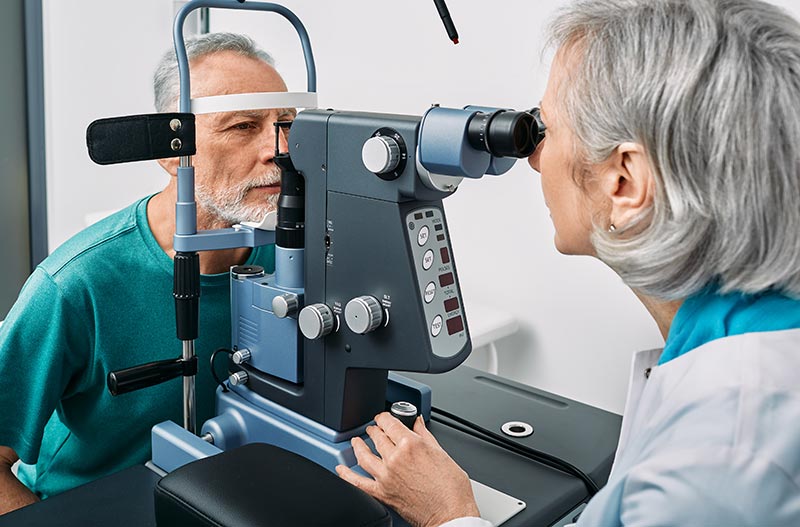Diabetic Eye Exam

If you have Type 1 or Type 2 diabetes, then you need a diabetic eye exam at least once each year, and your doctor may recommend coming in for diabetic eye exams more often than that, based on your health history. The expert doctors at Nova Vision Center will perform special tests as part of your diabetic eye exam to screen for signs of diabetic eye disease.
What is Diabetic Eye Disease?
People who have Type 1 or Type 2 diabetes can develop serious complications with their eye health and vision.
Diabetes can affect the eyes when blood sugar is too high, particularly when this level is not controlled over time. When blood sugar is too high, it can damage the blood vessels in the back of the eyes which may leak fluid or cause swelling.
Diabetic eye disease refers to a group of diseases that can affect people with diabetes, including diabetic retinopathy, cataracts, diabetic macular edema, and glaucoma.
Diabetic eye disease can damage the eyes and result in poor vision or blindness, and often there are no symptoms in the early stages. While anyone with diabetes can develop diabetic eye disease, the risk increases if blood sugar levels and/or blood pressure levels aren’t controlled.
Diabetic Retinopathy
Diabetic retinopathy is the most common cause of vision loss and blindness for diabetics. This disease affects the blood vessels in retina, which is the light-sensitive layer in the back of the eye. In the early stages, there may not be any obvious symptoms, but as it progresses, blood vessels start to bleed into the vitreous, which is the gel-like fluid that fills the eye, and then dark, floating spots or streaks may occur in vision.
The risk to develop diabetic retinopathy increases the longer you have diabetes. Women with diabetes who get pregnant or develop diabetes while pregnant (gestational diabetes) are also at high risk to develop diabetic retinopathy, so if you are pregnant and have diabetes, you need a diabetic eye exam as soon as possible.
Cataracts
While cataracts are a common occurrence as people get older, they can happen to diabetics at an earlier age than people without diabetes. Cataracts cause the front part of the eye to become cloudy and can make vision blurry or hazy, cause colors to seem faded, reduce night vision and increase sensitivity to light, and over time, can lead to vision loss.
Diabetic Macular Edema
Diabetic macular edema is characterized by a build-up of fluid and swelling in the macula, which is the part of the retina used to see clearly while driving, reading, and seeing faces. This disease can damage the vision in this part of the eye, and lead to either partial vision loss or blindness.
Glaucoma
Glaucoma is a group of eye diseases that damage the optic nerve. This disease is sometimes called “the silent thief of sight” because it can begin with little to no pain or symptoms, and the only way to catch it early on is through regular comprehensive eye exams. Diabetics have an increased risk of developing glaucoma.
Diagnosing Diabetic Eye Disease
The doctors at Nova Vision Center use their expertise and advanced diagnostic technology to screen for and diagnose diabetic eye disease. Your doctor will dilate your eyes to thoroughly examine the structures of your eyes and may use the OCT (Optical Coherence Tomography) to examine what is happening to the blood vessels in the retina.
Preventing Diabetic Eye Disease
If you have diabetes, talk to your primary care doctor about controlling your blood sugar levels. Uncontrolled, high blood sugar levels will damage the blood vessels in your retina and lead to serious damage to your vision. Schedule regular diabetic eye exams with your doctor at Nova Vision Center, even if you feel fine and don’t notice any changes to your vision, as there are often no symptoms of diabetic eye disease in the early stages
